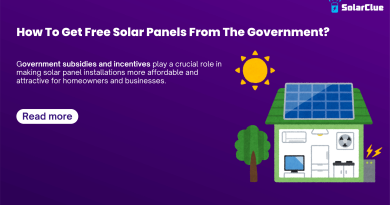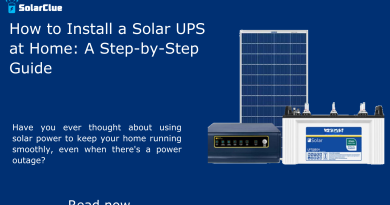String Inverter Solar
Imagine being able to power your entire home with just the sunlight hitting your roof. It’s not only possible but also becoming increasingly popular. Solar energy is an incredible resource, and it’s more accessible than ever before. But if you’re new to solar power, some of the technical details can be a bit overwhelming. One term you might have come across is “string inverter solar.” It sounds complicated, but don’t worry—I’m here to break it down in a way that’s easy to understand.
In this blog post, we’ll explore what a string inverter is, how it works in a solar power system, and why it might be the right choice for your home. By the end, you’ll have a clear understanding of this important component of solar energy, and you’ll be able to make informed decisions about whether it’s suitable for your needs.
Table of Contents
What Is a String Inverter?
To start, let’s talk about what an inverter does in a solar power system. When solar panels capture sunlight, they convert it into direct current (DC) electricity. However, your home appliances use alternating current (AC) electricity. This is where an inverter comes in—it converts the DC electricity from your solar panels into AC electricity that you can use in your home.
A string inverter is a type of inverter used in solar power systems. The name “string” comes from the way solar panels are connected in series, or “strings,” to form a circuit. In this setup, all the solar panels in a string are connected to a single inverter. The string inverter then converts the DC electricity from all the panels in that string into AC electricity.
How Does a String Inverter Work?
The operation of a string inverter is relatively straightforward. When sunlight hits your solar panels, they generate DC electricity. Each panel in a string feeds its electricity into the same circuit. This combined DC electricity is then sent to the string inverter, which converts it into AC electricity for use in your home.
One key thing to note about string inverters is that they work best when all the panels in a string receive the same amount of sunlight. This is because the performance of the entire string is limited by the panel with the lowest output. If one panel is shaded or dirty, it can reduce the efficiency of the entire string.
Benefits of Using a String Inverter
So, why would you choose a string inverter over other types of inverters? There are several benefits:
- Cost-Effective: String inverters are generally more affordable than other types of inverters, such as microinverters. This makes them a popular choice for homeowners looking to install a solar power system on a budget.
- Proven Technology: String inverters have been around for a long time and are a well-established technology. They are reliable and have a proven track record of performance.
- Ease of Maintenance: With a single inverter handling multiple panels, maintenance is simpler. If there’s an issue, you only have to check one device instead of multiple inverters.
- Efficiency: In ideal conditions, string inverters are highly efficient at converting DC to AC electricity. As long as your panels receive even sunlight, a string inverter will perform well.
Drawbacks of String Inverters
While string inverters have many benefits, they are not without their drawbacks. Here are a few to consider:
- Shading Issues: As mentioned earlier, string inverters work best when all panels receive the same amount of sunlight. If one panel is shaded, it can drag down the performance of the entire string.
- Limited Flexibility: String inverters are less flexible when it comes to system design. For example, if your roof has different orientations or angles, it might be challenging to use a string inverter efficiently.
- Single Point of Failure: Since all panels in a string are connected to a single inverter, a failure in the inverter can take down the entire string. This means that if the inverter fails, your entire system stops working until the inverter is repaired or replaced.
Comparing String Inverters to Other Inverters
To better understand the advantages and disadvantages of string inverters, let’s compare them to two other common types of inverters: microinverters and power optimizers.
| Feature | String Inverter | Microinverter | Power Optimizer |
|---|---|---|---|
| Cost | Lower | Higher | Moderate |
| System Design | Less flexible | Highly flexible | Moderate flexibility |
| Shading Impact | High | Low | Low |
| Installation | Easier (fewer devices) | More complex (one per panel) | Moderate (optimizer per panel) |
| Efficiency | High (with even sunlight) | High | High |
| Maintenance | Easier (one device to manage) | More complex (multiple devices) | Moderate (many optimizers) |
From this comparison, you can see that string inverters offer a balance of cost and efficiency but are best suited for installations where shading is not a significant issue, and the roof has a uniform orientation.
When to Choose a String Inverter
So, is a string inverter right for you? Here are some scenarios where a string inverter might be the best choice:
- Even Sunlight: If your roof receives consistent sunlight throughout the day without significant shading, a string inverter will work efficiently.
- Uniform Roof Orientation: If all your solar panels can be installed on a roof section with the same orientation and angle, a string inverter is a good option.
- Budget-Friendly: If cost is a significant factor in your decision, a string inverter offers a cost-effective solution.
- Simple Maintenance: If you prefer a system that’s easier to maintain, with fewer components to manage, a string inverter is a suitable choice.
When to Consider Other Inverters
On the other hand, you might want to consider microinverters or power optimizers if:
- Shading Issues: If parts of your roof are frequently shaded, microinverters or power optimizers might be more efficient, as they allow each panel to operate independently.
- Complex Roof Design: If your roof has multiple orientations or angles, microinverters or power optimizers offer more flexibility in design.
- Maximizing Performance: If you’re looking to maximize the performance of each panel, especially in less-than-ideal conditions, microinverters or power optimizers are worth considering.
Installation and Maintenance of String Inverters
Installing a string inverter is typically straightforward, especially compared to systems with multiple inverters or optimizers. Since all the panels in a string are connected to a single inverter, the wiring is simpler, and there are fewer components to install.
Maintenance is also more manageable with a string inverter. Since there’s only one inverter to monitor, troubleshooting is easier. However, it’s essential to keep an eye on the inverter’s performance, especially if you notice a drop in your system’s overall efficiency.
Future Trends in String Inverters
The technology behind string inverters continues to evolve. Manufacturers are working on improving efficiency, reducing the impact of shading, and integrating smart technology for better monitoring and control. Some modern string inverters come with built-in monitoring systems that allow you to track the performance of your solar panels in real time, directly from your smartphone.
As solar technology advances, we can expect string inverters to become even more efficient and user-friendly. This means that even as the solar market grows and more advanced technologies emerge, string inverters will likely remain a viable option for many homeowners.
Conclusion
Choosing the right inverter is a crucial part of setting up your home solar system, and understanding the pros and cons of a string inverter is an important step in that decision-making process. While string inverters may not be the best choice for every situation, they offer a reliable, cost-effective solution for many homeowners, especially those with consistent sunlight and uniform roof orientation.
If you’re considering installing a solar power system and think a string inverter might be right for you, it’s a good idea to consult with a solar professional. They can assess your home’s specific conditions and help you choose the inverter that will provide the best performance and value for your investment.
FAQs
1. What is the lifespan of a string inverter?
String inverters typically last between 10 to 15 years. Some high-quality models may last even longer with proper maintenance.
2. Can I mix different types of solar panels with a string inverter?
It’s generally not recommended to mix different types of solar panels in the same string, as this can lead to inefficiencies. All panels in a string should have similar electrical characteristics.
3. How do I know if my string inverter is working properly?
Most string inverters have indicators or displays that show their status. You can also monitor the system’s output through a monitoring system or app if your inverter supports it.
4. Can a string inverter work with a battery storage system?
Yes, but you may need a hybrid inverter or additional components to integrate battery storage with your string inverter system.
5. What happens if my string inverter fails?
If your string inverter fails, the entire string of panels connected to it will stop producing electricity until the inverter is repaired or replaced.




